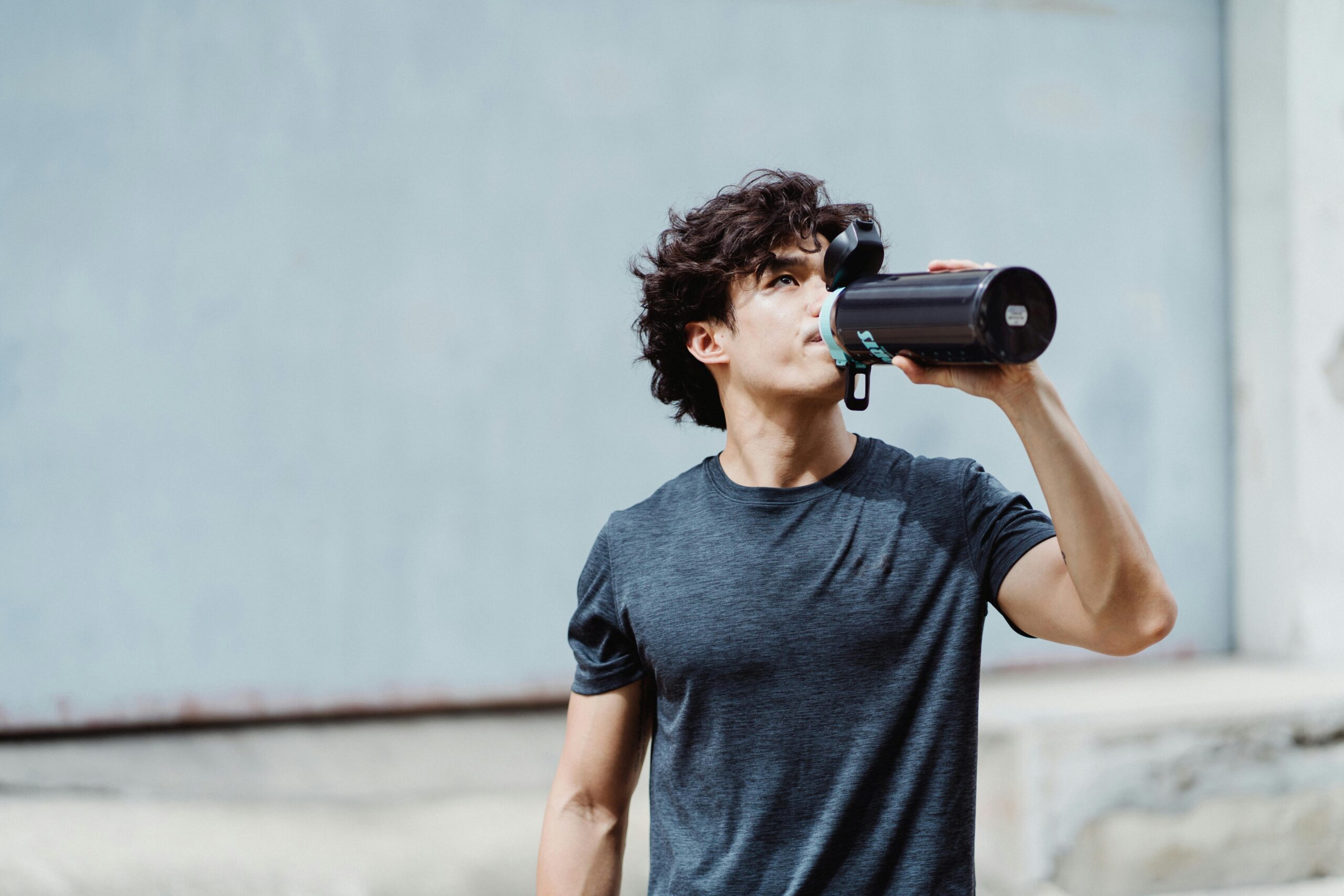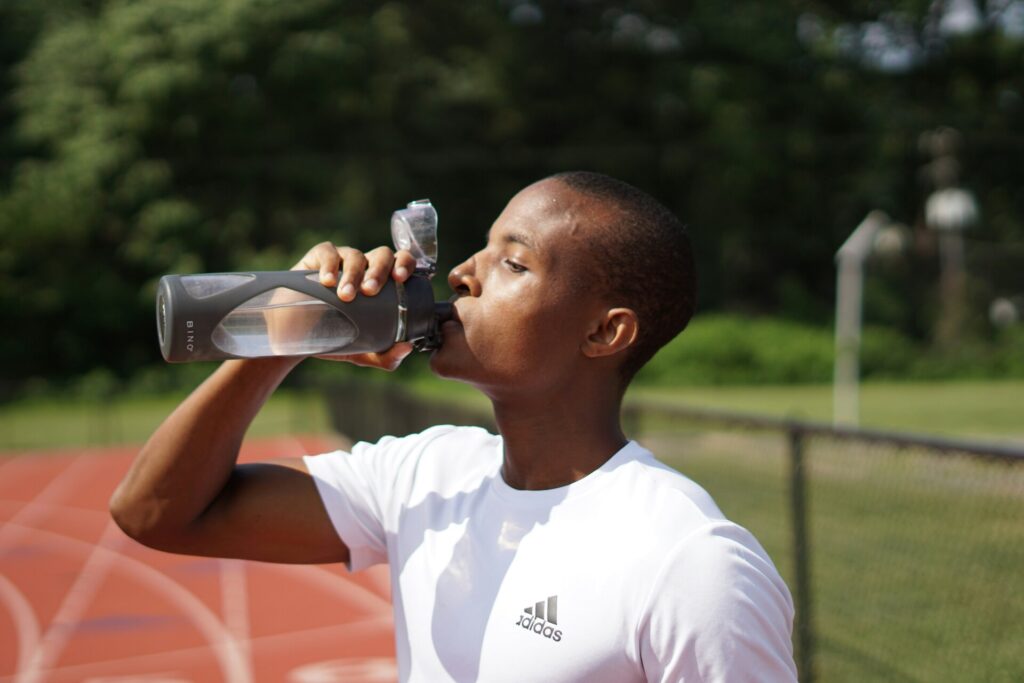Most of us think we’ve mastered our hydration strategies. We sip some water before a workout, take a few gulps during, and maybe chug a bottle afterward. Done, right? Well… not quite.
The truth is, proper hydration isn’t just about drinking water. It’s about how much you drink, when, and what your body needs based on your workout and environment. Your hydration strategy for a sweaty outdoor run should look totally different from a weight session in an air-conditioned gym.
Let’s explore smart hydration strategies for every workout setting, whether you are training in the heat or the cold or grinding through a high-intensity session.
Get ready to hydrate like a pro and improve your performance, recovery, and energy.
Why Strategic Hydration Matters
Now, let’s bust a myth: hydration isn’t just about gulping water.
Sure, water is essential, but real hydration is about timing, electrolyte balance, and knowing what your body needs in different conditions.
When you are even slightly dehydrated, just 1 to 2% of your body weight lost through sweat, it can seriously mess with your performance.
According to the American College of Sports Medicine, even mild dehydration can affect your focus, raise your heart rate, and reduce your endurance. Basically, everything you don’t want mid-workout.
And here’s the thing: it’s not just about hot weather. Your body loses fluids and electrolytes even in cold environments or low-intensity workouts.
Proper fluid and mineral balance is crucial for thermoregulation (how the body keeps cool), blood pressure, and muscle function.
Another surprise? You cannot overdo it.
One of the most common hydration mistakes is overhydration with plain water and ignoring electrolytes. This can dilute sodium levels in your blood, a condition called hyponatremia, and it’s more common than you think during long or intense sessions.
So no, hydration isn’t just “drink more water.”
It’s about drinking smarter, not just more. Your body will thank you.
Hydration Strategies in Hot and Humid Weather
If you have ever worked out in the heat and felt like a puddle five minutes in, you are not imagining it.
Hot and humid weather cranks up your sweat rate big time. That’s because your body works harder to cool itself down, which means you are losing more fluid and key minerals with every drop of sweat.
Why is it a bigger deal than you think?
- Sweat increases fast in hot, sticky air (your body cannot cool off as easily).
- You lose electrolytes, especially sodium and potassium, which are essential for muscle function and fluid balance.
- Dehydration can sneak up quickly with symptoms like fatigue, dizziness, headache, muscle cramps, and even nausea.
To stay ahead of it, it is important to prep your body before the sweat even starts.
Before your workout, drink 500 to 600 ml of water about two to three hours ahead of time. Snacking on something salty or mineral-rich (like banana, peanut butter, or plain yogurt) is also advisable.
During your workout, sip only 150 to 250 ml every 15 to 20 minutes.
If you work longer than 45 minutes or sweat heavily, add electrolytes to your drink, such as tablets, powder, coconut water, or a homemade mix.
After your workout, you can weigh yourself pre- and post-workout if you want to get technical. Each kilogram lost is equivalent to 1 to 1.5 litres of fluid to replace.
Do not just chug water. Pair it with something salty or go for a recovery drink that includes sodium.
It also helps to dress smart. Wear breathable, moisture-wicking clothing in light colors, and try to schedule your workouts during cooler times of the day (early morning or late evening). Keeping a water bottle nearby can also make a big difference.
If you are on a budget, try this simple homemade electrolyte drink:
- 1 liter of water
- ¼ tsp salt
- 2 tbsp lemon or calamansi juice
- 1 tbsp honey
- Optional: A splash of coconut water for added potassium.
It is simple, refreshing, and gives your body what it actually needs, without the sugar overload of store-bought drinks.
Hydration Strategies in Cold Weather
Cold weather might fool you into thinking you don’t need as much water, but your body would definitely disagree.
When it’s chilly outside, your thirst sensation naturally drops, which means you are less likely to reach for your water bottle, even when your body needs it. Add to that cold-induced diuresis (yep, cold temperature can make you pee more often), and you are quietly losing fluids without realizing it. On top of that, breathing in cold, dry air leads to moisture loss through your respiratory system, which adds up over the course of a workout.
Just because you are not drenched in sweat does not mean dehydration isn’t happening. That’s why it’s essential to stick to a hydration routine. Sip regularly, even if you are not feeling thirsty.
Warm drinks like herbal teas, light broths, or hot water with lemon are great options, especially if you struggle with cold fluids during winter. You can also sneak in more fluids with hydrating meals like soups, stews, or fruits with high water content (yes, oranges and apples still count).
If you are doing outdoor cardio, like running, hiking, or snow sports, don’t skip your fluids just because it’s cold. Use an insulated bottle to keep your drink from freezing, and take small sips during breaks. You can even warm up your electrolyte drink if that makes it more enjoyable. Whether you are hitting the trails or the slopes, proper hydration keeps your energy up and your muscles functioning smoothly, even when the weather is far from warm.
Hydration Strategies for High-Intensity & Endurance Training
When it comes to high-intensity or endurance workouts, hydration needs go way beyond just a few sips of water. These types of sessions: HIIT, long-distance runs, cycling, or back-to-back circuits make you sweat more, breathe harder, and burn through energy fast. That means you are losing not just water but also sodium, and that combo can quickly lead to cramps, early fatigue, or even dizziness if you don’t replenish properly.
This is where the hydration strategy really shines.
Preloading before your workout by drinking 500 ml of water with a pinch of salt or having a light, salty snack can help you start strong.
Aim for around 200 ml every 15 minutes during your session, especially if you are going for 45 minutes or longer. If your workout exceeds the hour mark or you are training hard in heat, add electrolytes and carbs to your drink. Sports drinks, coconut water with a pinch of salt, or even DIY options work well to keep your fluid and energy levels balanced.
After your workout, your body is recovering and begging to refuel. This is the perfect time for a recovery shake that includes water, protein, and sodium.
Here’s a simple solution:
- 300 ml of water
- 1 scoop of protein powder
- Pinch of salt
You can add a splash of coconut water or a bit of honey if you want extra carbs.
Pro Tip: Try the sweat test to be precise with your hydration. You need to weigh yourself before and after a workout. For every kilogram of body weight lost, drink 1 to 1.5 liters of fluid to fully rehydrate. It might sound like a lot, but this small habit can significantly impact your muscle recovery, performance, and how you feel the next day.
Hydration Strategies by Workout Type
Not all workouts are created equal, and neither are your hydration needs. What works for a yoga flow won’t cut it for a 10K run or a sweaty spin class.
Here’s a quick guide to see what your body might need based on the type of workout you are doing:
| Workout Type | Hydration Tip |
| Weightlifting | Sip water before and during; refuel with protein and water afterward. |
| Light Cardio | 150 to 250 ml every 20 to 30 minutes if over 30 minutes. |
| Long-Distance Cardio | Preload + drink 200 ml every 15 minutes + post-workout electrolytes. |
| HIIT | Hydrate before, sip 200 ml every 15 minutes, and use an electrolyte shake after. |
| Outdoor Running | Adjust for weather; use electrolytes in heat, warm drinks in winter. |
| Group Classes | Bring a bottle and sip between sets (especially in high-energy sessions). |
| Hot Yoga | Hydrate well before, and rehydrate with coconut water or an electrolyte drink. |
| Sports (e.g., basketball, football) | Drink during breaks, and refuel with a salty snack or sports. |
Whatever your workout style, the key is to stay ahead of thirst, listen to your body, and refuel based on how much you sweat. A little planning goes a long way in keeping you strong, focused, and cramp-free from start to finish.
Common Hydration Mistakes to Avoid
Let’s be real: Hydration isn’t always as simple as “just drinking more water.”
Even the most dedicated fitness folks can fall into sneaky traps like only drinking when thirsty, skipping electrolytes, or going overboard with sugary sports drinks. Then there’s overhydration (yes, that’s a thing) and completely forgetting to hydrate in cold weather because, well, you’re not sweating buckets.
These common hydration mistakes can lead to anything from minor cramps to full-on performance crashes, and most of them are easy to fix once you know what to look out for.
Your hydration strategy might need a tweak if you have ever felt foggy mid-workout or sluggish after sweating it out.
Check out our full breakdown: 7 Most Common Hydration Mistakes (and How to Avoid Them).
Final Thoughts
Hydrate smarter, not just more.
At the end of the day, there’s no one-size-fits-all rule for hydration. What your body needs will change depending on the weather, the workout, and your mood.
That’s why it is so important to listen to your body. Pay attention to your thirst cues, energy levels, and sweat.
Be proactive, especially when training in the heat or going all-in on high-intensity sessions. Sip throughout the day, adjust for conditions, and remember to replace lost electrolytes. The more you treat hydration as part of your routine (not an afterthought), the better your performance and recovery will be.
FAQs about Hydration Strategies
Commonly asked questions…


